Our Location
Stainless steel contains iron, at least 10.5% chromium, and other elements. Chromium creates a self-healing barrier against oxidation. Adding elements like nickel, molybdenum, titanium, niobium, and manganese enhances its properties. It’s durable, versatile, and widely used in elevator, marine, aerospace, automotive, and new energy industries.
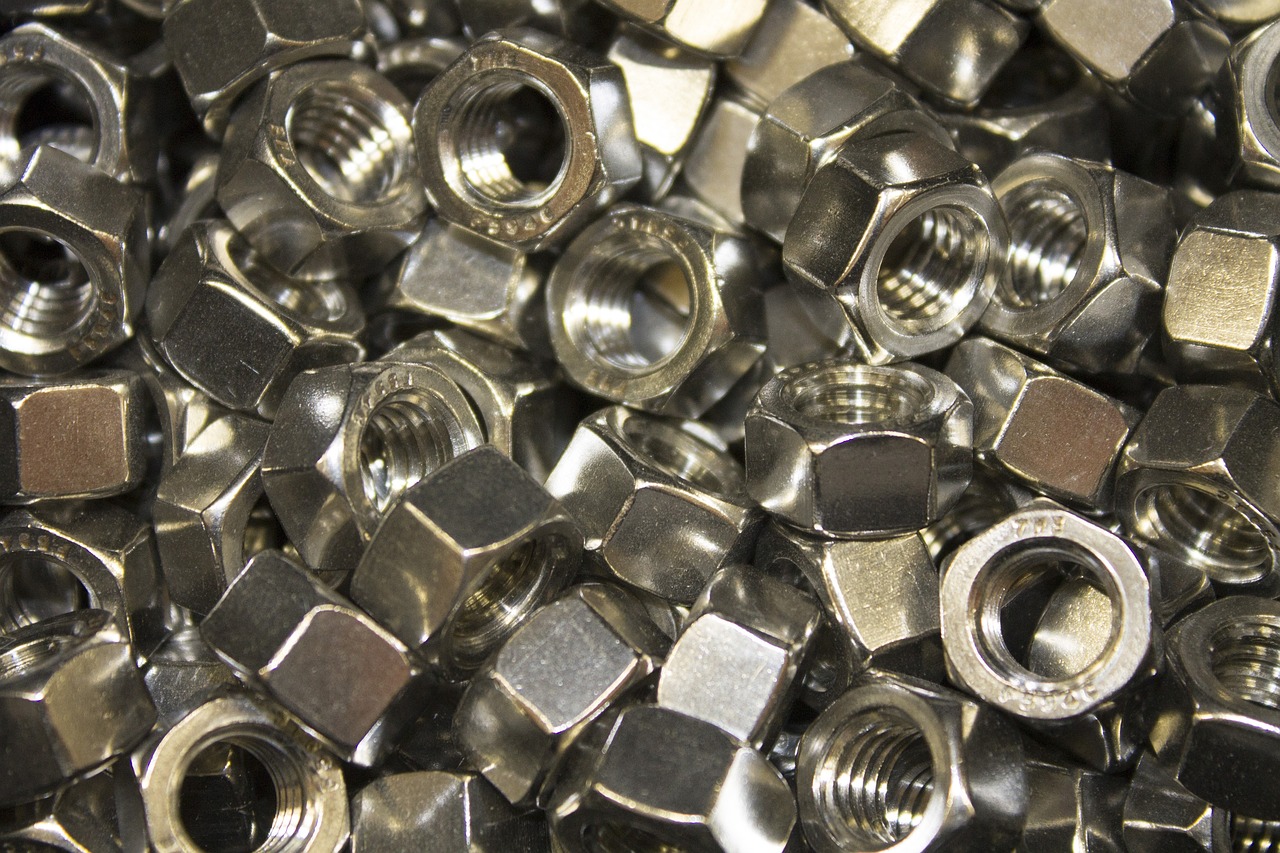
Table of Contents
ToggleStainless steel is mainly composed of medium and low-carbon steel mixed with different metals to modify their properties. For instance, the addition of chromium and nickel makes them resistant to corrosion and harder. Other metals increase their malleability, toughness, ductility, tensile and shear strength, and other characteristics. Stainless steels are generally strong, with some examples having all metals’ highest tensile and yield strengths. They are also innately corrosion-resistant, performing exceptionally well in specific environments based on their grade and alloy type. Moreover, depending on the grade, stainless steel can have high- and low-temperature performance, from extremely low temperatures to as high as 2,000 °C.
Over 60 and more than 100 unique grades of stainless steel are currently being developed for different purposes. The study of stainless steel is one of the most active areas of research in metallurgy. Various national and international standards cover these grades. These standards are becoming unified and generally define alloys and properties that are close or identical.
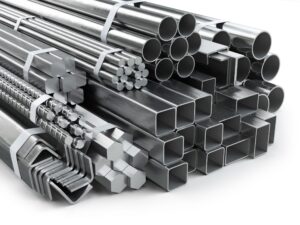
Stainless steel is a relatively new type of metal compared to iron, which has been used for over a thousand years. It was first developed in 1913 by Harry Brearley from Sheffield, and Sheffield became well-known for its steel production because of this.
Creating ‘rustless steel’ had been attempted before but without success. However, Brearley discovered how to make stainless steel while trying to solve the erosion problem in gun barrels during World War I. Since then, improvements have been made rapidly, and stainless steel has become one of the most commonly used commercial alloys.
Due to its durability, corrosion resistance, and strength, stainless steel has become a primary material across various industrial sectors, such as new energy, automotive parts, and elevator components.

Stainless steel corrosion resistance is inversely proportional to its carbon content. Therefore, the carbon content in most stainless steels is kept relatively low, with a maximum limit of 1.2%. In some cases, the carbon content is lower than 0.03%, such as in 00Cr12. Chromium (Cr) is the primary alloying element in stainless steel, and the steel only exhibits corrosion resistance when the Cr content reaches a specific value. Therefore, stainless steel typically has a minimum Cr content of 10.5%. Other elements, such as Ni, Ti, Mn, N, Nb, Mo, Si, and Cu, are also present in stainless steel.

Different stainless steel products have varying processing techniques and raw material quality requirements. The thickness tolerance for raw materials also differs based on the product type. For instance, Class II tableware and insulated cups require a high thickness tolerance ranging from -3% to 5%. On the other hand, Class I tableware, steel pipes, hotel refrigerators, and distributors have different thickness tolerance requirements, which range from -5% to -10%, -8%, and -4% to 6%, respectively. The variation in sales, both domestically and internationally, also affects the thickness tolerance requirements for raw materials. Generally, export customers demand a higher thickness tolerance, while domestic customers have lower thickness tolerance requirements, primarily due to cost considerations. Some customers even require a thickness tolerance of up to -15%.
1. DDQ (deep drawing quality) material refers to a material used for deep drawing (punching) purposes, also known as soft material. This material is characterized by high elongation (≥ 53%), low hardness (≤ 170%), internal grain grade between 7.0 and 8.0, and excellent deep drawing performance. Enterprises producing thermos bottles and pots generally have higher processing ratios (BLANKING SIZE/product diameter) using DDQ materials. The processing ratios for these products are 3.0, 1.96, 2.13, and 1.98, respectively. The DDQ material is mainly used for products that require high processing ratios. Although products with processing ratios exceeding 2.0 generally need to go through several stretches to complete, if the extension of raw materials cannot be achieved, the product is prone to cracking and tearing during deep-drawn product processing. It affects the qualified rate of finished products and increases the cost for manufacturers.
2. General materials are mainly used for purposes other than DDQ. This material has relatively low elongation (≥ 45%), relatively high hardness (≤ 180HB), and an internal grain size grade between 8.0 and 9.0. Compared to DDQ materials, its deep drawing performance is relatively poor. For tableware, it is mainly used for products obtained without stretching, such as spoons, forks, electrical appliances, steel pipes, etc. However, it has an advantage compared to DDQ materials: its BQ properties are relatively better due to its slightly higher hardness.
Stainless steel sheet is a low-cost material, but clients have very high requirements for its surface quality. Various defects such as pitting, scratches,sand holes, creases, and contamination are inevitable in the production process of stainless steel sheets. As a result, surface quality defects such as scratches and creases are not allowed in high-grade materials, and defects such as pitting and sand holes are also not allowed in spoons, spoons, forks, and production because they are difficult to remove during polishing. Based on the degree and frequency of various surface defects, the surface quality level must be determined to determine the product level.
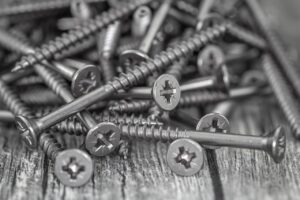
Stainless Steel Screws
A variety of smelting methods used in metallurgical processing produce stainless steel. There are three standard processes:
1. Electric arc furnaces heat raw materials with high currents between two carbon electrodes. Add alloying elements like scrap, pre-made steel, chromium, iron ore, and refining components to the furnace crucible to create stainless steel. Impurities are removed as slag/clinker during melting and refinement.
2. Iron ore is melted with coke in blast furnaces. Molten iron is purified by blowing oxygen through it, which removes impurities and produces slag as a byproduct. Then, chromium and other elements are added to make stainless steel.
3. Vacuum induction and vacuum arc melting create high-purity metals from refined source materials without adding ore. It allows for precise control over the composition of stainless steel alloys.
After melting and refining, stainless steel is cast into billets and formed into shapes using various processes:
1. Casting: Stainless steel is cast by pouring molten metal into a cavity and then solidifying it to retain the cavity shape.
2. Rolling: Stainless steel billets pass through precise pinch rollers to shape them into sheets or other forms. The process can be hot or cold, producing materials with diverse strengths and structures.
3. Forging: The forging process of stainless steel is heated and then shaped by hammering or pressing it into the desired form.
4. CNC Machining: CNC Machining stainless steel involves cutting and shaping using lathes and mills.
Once the stainless steel has been shaped, it can undergo further processing to enhance its properties, such as polishing, heat treatment, or coating.
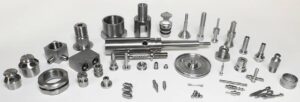
The welding performance requirements differ depending on the intended use of the product. For instance, most pot and tableware manufacturers do not require welding performance. However, welding performance is crucial for most products made of stainless steel, including insulated cups, second-class tableware, water dispensers, steel pipes, water heaters, and more.
Good corrosion resistance is a vital requirement for most stainless steel products, such as kitchenware, class I and II tableware, water dispensers, and water heaters. Some foreign vendors even conduct corrosion resistance tests on products by heating NACL aqueous solution to boiling, pouring out the solution after some time, washing and drying the product, and weighing it to determine the degree of corrosion. (Note: During product polishing, rust spots may appear on the surface during testing due to the presence of Fe in the sandcloth or sandpaper).
In most cases, stainless steel products are polished during production, except for a few items like water heaters and water dispenser liners that don’t require it. Therefore, good polishing performance of the raw materials is necessary. The factors that mainly affect the polishing performance include the following:
1. The surface defects of raw material, such as pitting, scratches, and acid washing.
2. Material issues with raw materials, such as low hardness, make it difficult to polish (poor BQ performance). High hardness BQ is relatively good.
3. Products that have undergone deep stretching will also have small black spots and RIDGING on the surface of areas with significant deformation, affecting their BQ properties.
Stainless steel’s ability to maintain its physical and mechanical properties at high temperatures is known as heat resistance.
Carbon Influence:
Carbon is important for austenitic stainless steel, as it stabilizes and expands the austenite zone. However, carbon can form harmful compounds with chromium during welding or heating, leading to decreased corrosion resistance. To prevent this, most austenitic stainless steels have less than 0.03% carbon content. Carbon can also improve stress and corrosion resistance in highly concentrated chlorides. To avoid the harmful effects of carbon, it’s important to control the carbon content during smelting and prevent surface carbonization during subsequent hot and cold work and heat treatment.
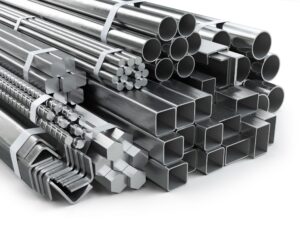
Stainless steel is typically silver in color, but some companies offer special processes to achieve different colors. For instance, heating stainless steel in an oven to about 700 °C in an oxygen-rich environment can create a range of bronze to golden colors. It occurs because iron oxides form in the surface film, resulting in yellow, gold, and brown hues that vary based on temperature and time. Additionally, due to an oxidation process, stainless steel can develop blue tones when heated to 250 °C in air.
Stainless steel parts are polished by electropolishing to a mirror finish, creating a reflective silver appearance. It can be colored as described above. Components can also be textured with sandblasting, shot peening, brush finishing, or photo etching.
A brushed or linished finish is typically used on street furniture and building cladding to minimize the appearance of scratches that result in material degradation over time.
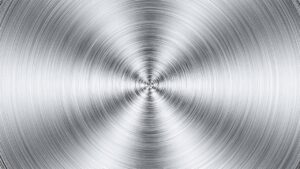
The following is the primary naming convention for the main grades of stainless steel:
Austenitic stainless steel is a steel contains austenite microstructure. Austenite is a solid solution of iron and carbon that forms above the critical temperature of 723°C. This family of stainless steels is known for its high toughness and remarkable resistance to high temperatures. About 70% of all stainless steel belongs to the austenitic family, containing a minimum of 16% chromium and 6% nickel.
Austenitic stabilizers are certain elements that are added to promote the formation of austenite microstructure. This grade of stainless steel is a non-magnetic metal that can’t be hardened by heat treatment. The corrosion resistance of this steel grade can be adjusted based on the service environment.
Martensitic stainless steel is generally stronger and harder but has lower corrosion resistance. It contains 12–18% chromium and may include nickel or molybdenum.
Ferritic stainless steels have 10.5-27% chromium and higher carbon content than austenitic types. They’re less ductile but have good corrosion resistance, making them suitable for automotive applications but not marine environments.
Duplex stainless steel is a combination of ferritic and austenitic stainless steel. It gives it the properties of both constituents. It contains high amounts of chromium and low amounts of nickel, making it unique. Duplex stainless steel has high tensile strength and can be welded easily. It is more resistant to stress corrosion than ferritic grades but not as much as austenitic grades. Compared to ferritic grades, it is more challenging than austenitic grades.
The precipitation-hardening stainless steel achieves greater strength and hardness by inducing lattice stress by forming small particles precipitated within the material. This results in a three to four-times stronger material than basic austenitic stainless steel.
| Types of stainless steel | Ductility | Weldability | Temp Resistance | Common Grades |
| Ferritic | Medium | Low | High | 430 |
| Austenitic | High | High | High | 304,310,316 |
| Martensitic | Low | Low | Low | 410,420 |
| Precipitation Hardening | Medium | Low | Low | 630 |
| Duplex | Medium | High | Low | 2205 |
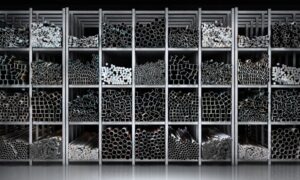
The grading system for stainless steel distinguishes alloys based on their toughness, resistance to corrosion, magnetic properties, and composition. The US Society of Automotive Engineers (SAE) developed the first grading system using a 3-digit code, with grades ranging from 100 to 600 series classifications. This system was later improved by the American Society for Testing and Materials (ASTM) with a 6-digit code, known as Unified Number System (UNS) identifiers. In most cases, UNS identifiers share the same first three numbers as their American Iron and Steel Institute (AISI) equivalents.
chromium manganese nickel
SS201, SS202, et al. have discovered that replacing nickel with manganese results in poor corrosion resistance. This series is widely used as a low-cost substitute for the 300 series.
chromium-nickel austenitic stainless steel
301: Good ductility, primarily used for forming products. It can be hardened rapidly through mechanical processing. It has better weldability, wear resistance, and fatigue strength than 304 stainless steel.
302: It has the same corrosion resistance as 304 but better strength due to a relatively high carbon content.
303: Adding a small amount of phosphorus and sulfur is easier to machine than 304.
304: A universal model, also known as 18/8 stainless steel. It is used for corrosion-resistant containers, tableware, furniture, railings, and medical equipment. It comprises 18% chromium and 8% nickel, making it non-magnetic and resistant to changes in its metallographic structure through heat treatment methods. The GB grade is 06Cr19Ni10.
304 L: 304L has the same characteristics as 304, but with low carbon, making it more corrosion-resistant and easy to heat treat. However, it has low mechanical properties, which are suitable for welding, and some products are not easy to heat treat.
304 N: It is a nitrogen-containing stainless steel with the same characteristics as 304. Adding nitrogen improves the steel strength.
309: Grade309 has better temperature resistance than SS304, with a temperature resistance of up to 980 ℃.
309 S: It has excellent heat and oxidation resistance due to its high amount of chromium and nickel. It is used for heat exchangers, boiler components, and jet engines.
310: It has excellent high-temperature oxidation resistance, with a maximum operating temperature of 1200 ℃.
316: It is the second most widely used steel grade after 304 and is mainly used in the watch accessories, food, and and medical industries. The addition of molybdenum gives it a special corrosion-resistant structure. It has good resistance to chloride corrosion compared to 304, which is also used as “marine steel.” Stainless steel 316 is commonly used in nuclear fuel recovery devices. The 18/10 grade stainless steel is usually suitable for this application level.
316 L: Low carbon makes it more corrosion-resistant and easy to heat treat. It is widely used for refrigerant storage tanks, chemical processing equipments, and nuclear power generators.
321: Other than reducing the risk of material weld corrosion due to adding titanium elements, it has properties similar to 304.
347: It has a stabilizing element, niobium, making it suitable for welding aviation equipment components and chemical equipments.
Martensitic and ferritic stainless steel, manganese-free, can partially replace 304 stainless steel
408: It has good heat resistance but weak corrosion resistance, with 11% Cr and 8% Ni.
409: It is the cheapest model (in the UK and US) and is usually used for automotive exhaust pipes. It belongs to ferritic stainless steel (chromium steel).
410: It is martensitic (high-strength chromium steel) with good wear resistance but low corrosion resistance.
416: Adding sulfur to the material enhances its processing performance.
420: It is a type of martensitic steel that is used for cutting tools and surgical knives. It is similar to early stainless steels such as Brinell high chromium steel.
430: Ferritic stainless steel is mainly used for decoration, such as in automotive accessories. It has good formability but poor temperature and corrosion resistance.
440: This high-strength cutting tool steel has a slightly higher carbon content. It can achieve higher yield strength after appropriate heat treatment, and its hardness can reach 58HRC, making it one of the hardest stainless steels. The most common application for this steel is in razor blades. There are three commonly used models, namely 440A, 440B, 440C, and 440F (an easy-to-process type).
This is a heat-resistant chromium alloy steel.
This is Martensitic precipitation-hardening stainless steel.
Selecting the best grade of stainless steel for any application is a decision that should be made after carefully considering several factors. These include the strength requirements, corrosion resistance, cost, working methods, tools, and level of formability required. The degree of corrosion resistance is also a crucial factor to consider. All these factors must be integrated into the material selection process to determine the grade of stainless steel that best suits the application.
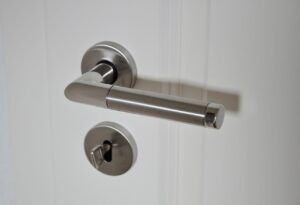
| – | International Standard | USA | CHINA | JAPAN | Germany | UK |
| No. | IS0 | AlSI、ASTM | GB | JIS | DIN | BS |
| 1 | 12 | 302、S30200 | 1Cr18Ni9 | SUS302 | X12CrNi88 | 302S25 |
| 2 | 11 | 304,830400、TP304 | 0Cr18Ni9 | SUS304 | X5CrNi89 | 304S15 |
| 3 | 10 | 304LS30403、TP304L | 00Cr19Ni10 | SUS304L | X2CrNi189 | 304S12 |
| 4 | – | 1Cr18Ni9Ti | X10CrNiTi189 | 一 | ||
| 7 | 0-1Cr18Ni12Mo2 T | X10CrNiMoTi1810 | 320817 | |||
| 8 | 19、19 | 316Ls S31603、TP316L | 00Cr17Ni14Mo2 | SUS316L | X2Cr | 316S12 |
| 9 | 3108、S31008s TP310S | 0Cr25Ni20 | SUS310S | |||
| 15 | 309S、S30908 | 0Cr23Ni13 | SUS3098 | |||
| 16 | 一 | 316Ns S31651 | 0Cr17Ni12Mo2N | SUS316N | 一 | |
| 17 | 00Cr17Ni13Mo2N | SUS3161N | X2CrNiMoN1812 | |||
| 18 | DCr18Ni12Mo2Cu | SUS316JI | ||||
| 19 | 00Cr18Ni14Mo2Cu2 | SUS316JL | ||||
| 20 | 304 | DCM9NM9N | SUS304N |
1. Density
Carbon steel is denser than ferritic and martensitic stainless steel, but less dense than austenitic stainless steel.
2. Electrical resistivity
The electrical resistivity increases in order of carbon steel, ferrite, martensite, and austenitic stainless steel;
3. The ranking of the coefficient of linear expansion is similar, with austenitic stainless steel having the highest coefficient and carbon steel having the lowest coefficient;
4. Carbon steel, ferritic, and martensitic stainless steel have magnetism, while austenitic stainless steel has no magnetism. However, magnetism will be generated when it undergoes martensitic transformation during cold work hardening. Heat treatment can eliminate this martensitic structure and restore its non-magnetism.
Compared to carbon steel, austenitic stainless steel has different characteristics.
1) High electrical resistivity, about five times that of carbon steel.
2) The linear expansion coefficient increases as the temperature increases, and it is 40% higher than that of carbon steel.
3) The material has low thermal conductivity, which is approximately one-third of carbon steel.
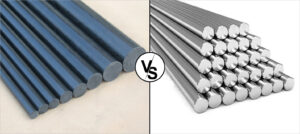
Chromium plays a vital role as an alloying element in austenitic stainless steel. It provides the steel with rust and corrosion resistance primarily due to the passivation effect. The passivation effect promotes the steel’s passivation and maintains it in a stable and passive state.
Chromium has a significant effect on the structure of austenitic stainless steel. It strongly forms and stabilizes ferrites, reducing the austenite zone. As the steel content increases, ferrite can appear in austenitic stainless steel. Research has shown that in chromium-nickel austenitic stainless steel, a carbon content of 0.1% and a chromium content of 18% require the lowest nickel content of about 8% to obtain a stable single austenitic structure. Therefore, the most suitable is the 18Cr-8Ni type chromium-nickel austenitic stainless steel with a chromium and nickel content ratio. In austenitic stainless steel, an increase in chromium content can lower the martensitic transition temperature (Ms), thereby enhancing the stability of the austenitic matrix. However, an increase in chromium content also increases the formation tendency of some intermetallic phases such as δ, χ, and σ, which reduce the steel’s plasticity, toughness, and corrosion resistance under certain conditions.
Chromium is a strong carbide-forming element in austenitic stainless steel. Common chromium carbides in austenitic stainless steel include Cr23C6, and when steel contains molybdenum or chromium, expired carbides such as Cr6C can also be seen. The formation of carbides can significantly impact the properties of steel under certain conditions.
Chromium’s most significant impact on the properties of austenitic stainless steel is its corrosion resistance. Increasing chromium content improves the steel’s oxidation resistance and performance in acidic chloride media. Chromium enhances the resistance of steel to some reducing media, organic acids, urea, and alkaline media under the combined action of nickel, molybdenum, and copper. Chromium enhances the steel’s resistance to localized corrosion, such as intergranular corrosion, point corrosion, crevice corrosion, and stress corrosion under certain conditions. An increase in chromium content benefits the intergranular corrosion resistance of austenitic stainless steel as it can increase carbon solubility and reduce chromium’s impoverishment. Chromium is very effective in improving the corrosion resistance and crevice corrosion performance of austenitic stainless steel when molybdenum, molybdenum, and nitrogen are present in the steel simultaneously. While molybdenum and nitrogen’s corrosion resistance and crevice corrosion ability are higher than chromium, low chromium content in austenitic stainless steel reduces or eliminates their resistance to point corrosion and crevice corrosion.
The effect of chromium on the stress corrosion resistance of austenitic stainless steel varies with experimental medium conditions and actual usage environment. In MgCl2 boiling solution, the impact of chromium is generally harmful. However, in water medium containing Cl – and oxygen, high-temperature, and high-pressure water, and stress corrosion conditions originating from pitting corrosion, increasing the chromium content in the steel is beneficial for stress corrosion resistance; chromium can also prevent the tendency of intergranular stress corrosion in austenitic stainless steel and alloys due to the increase in nickel content, and is beneficial for cracking (NaOH) stress corrosion. Chromium has an important impact on the corrosion resistance of austenitic stainless steel and significantly improves its properties such as oxidation resistance, sulfur resistance, and resistance to molten salt corrosion.
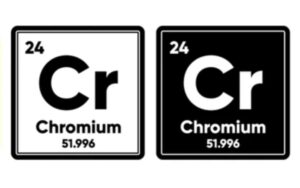
Nickel significantly impacts the physical and mechanical properties of austenitic stainless steel. It stabilizes the austenite phase and increases its phase zone. The minimum nickel content required in steel with 0.1% carbon and 18% chromium is approximately 8% to obtain a single austenite structure. Austenitic stainless steel with higher nickel content can eliminate residual ferrite and reduce the tendency to form a phase. However, increasing nickel content reduces the solubility of carbon in austenitic stainless steel, thus enhancing the tendency of carbide precipitation.
Nickel affects the mechanical properties of austenitic stainless steel by stabilizing its austenite structure. Within the range of nickel content where martensitic transformation can occur, the strength of the steel decreases while its plasticity improves as the nickel content increases. Austenitic stainless steel with a stable austenite structure has excellent toughness, including extremely low-temperature toughness. Adding nickel further enhances the toughness of chromium manganese austenitic stainless steel with a stable austenite structure. Nickel also reduces the cold work hardening tendency of austenitic stainless steel, mainly by increasing the stability of austenite, reducing or even eliminating the martensitic transformation during cold work.
As nickel reduces the cold work hardening rate of austenitic stainless steel, it reduces the steel’s room temperature and low-temperature strength and improves its plasticity. Increasing nickel content benefits the cold working formability of austenitic stainless steel. It can also reduce or eliminate the δ ferrite in 18-8 and 17-14-2 austenitic stainless steels, improving thermal processing performance. However, the reduction of δ ferrite is detrimental to the weldability of these steel grades and increases the tendency for welding hot cracking wires. Nickel significantly improves the hot working performance of chromium manganese nitrogen austenitic stainless steel, thereby improving the steel’s yield.
Adding nickel and increasing its content increases the thermodynamic stability of austenitic stainless steel. As a result, it has better rust resistance and resistance to oxidizing media, with improved performance in reducing media as nickel content increases. Nickel is also essential to improve the resistance of austenitic stainless steel to transgranular stress corrosion in many media. However, the impact of nickel on the corrosion resistance of austenitic stainless steel in various acidic media needs to be noted. Under certain conditions of high temperature and high-pressure water, increasing nickel content increases the sensitivity of steel and alloys to intergranular stress corrosion, but this can be alleviated or suppressed by increasing chromium content. Increasing nickel content in magnetic card austenitic stainless steel decreases the critical carbon content for intergranular corrosion, i.e., increasing its sensitivity to intergranular corrosion. However, the effect of nickel on the resistance to point corrosion and crevice corrosion of austenitic stainless steel is not significant. Finally, nickel enhances the high-temperature oxidation resistance of austenitic stainless steel.
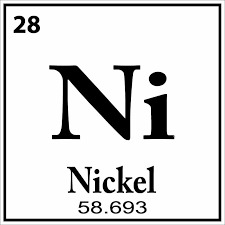
Cleanness: Steel’s easy cleaning and impact resistance make it popular in medical and food industries with strict hygiene standards, as it does not allow dirt and germs to hide in dents or crevices.
Corrosion Resistance: Thanks to its chromium alloy, stainless steel has high rust and corrosion resistance. It is ideal for use in harsh environments such as marine or chemical industries and reduces maintenance and replacement needs.
Strength: Stainless steels from the precipitation-hardening class are some of the strongest metals available for mass-produced components. If specified for maximum strength, stainless steel can easily match the strength of the strongest carbon steel after heat treatment.
Durability: Stainless steel is a popular alloy due to its durability, strength, and corrosion-resistant properties, making it a top choice for businesses across various industries.
Formability: Stainless steels are versatile materials that offer many manufacturing options. They can produce complex components, from valve gates to kitchen utensils.
Weldability: Stainless steel alloys are highly weldable for clean, watertight, and permanent assembly. However, welded areas have altered corrosion properties.
Waterproof: Stainless steel is waterproof because it resists freshwater corrosion and forms an impervious barrier unless mechanically pierced.
High Cosmetic Facility: Stainless steel has a contemporary and long-lasting appearance, staying unaltered and requiring little maintenance in most applications.
In a word, stainless steel offers various benefits in various applications. It is durable, requires low maintenance, has high-quality cosmetics, and is highly flexible in design.
Maintenance
Stainless steel is often recognized for its ability to resist rusting but is not entirely resistant to corrosion. When it comes into contact with harsh chemicals or is exposed to chloride, it can rust or become stained. Regular cleaning and maintenance will ensure the material remains in good condition.
Hardness: Some grades of stainless steel can be difficult to machine or shape due to their hardness.
Weight: While stainless steel boasts high strength and corrosion resistance, its impracticality for lightweight applications is due to its high density.
Cost: Depending on the specific grade and application, stainless steel can be pricier than other materials, such as carbon steel or aluminum.
Temperature: Alloys must be carefully chosen for extreme temperatures. Some are suited to cryogenic applications, while others have high-temperature limits for safe use.
Shape: Working with stainless steel requires specialized tools and skills compared to other materials.
Environment: While some types of stainless steel are highly resistant to corrosion, others may have lower resistance to salt corrosion. Some types of stainless steel have specific chemical sensitivities that can lead to corrosion. For instance, 316 stainless steel fuel tanks used in marine environments are prone to tunneling corrosion that can create pinholes due to rust. Stainless steel fittings on boats or ships can also develop brown stains (iron oxide) due to the iron content reacting slowly to salt presence. Welded stainless steel can also develop localized sensitivities to corrosion in non-salt environments.
Work Hardening Embrittlement: Repeatedly subjecting overstressed components near their elastic limit can lead to severe work hardening in certain alloys, resulting in brittle failure.
Thermal Conductivity
Stainless steel has lower thermal conductivity than aluminum and copper, making it less efficient in conducting heat. In applications where heat transfer is essential, there may be better choices than stainless steel.
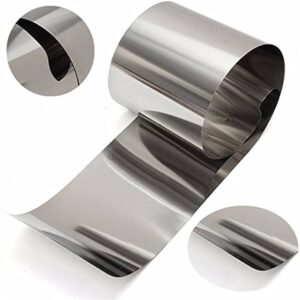
Most usage requirements aim to maintain the original appearance of the building for a very long time. The main considerations when selecting stainless steel type are:
However, other applications are increasingly seeking structural impermeability or integrity. For example, the construction cost of the owner may be more important than aesthetics, even if the surface could be cleaner. The use of 304 stainless steel in dry indoor environments is quite effective.
However, regular cleaning is necessary in rural and urban areas to maintain its appearance outdoors. The surface can be very dirty in heavily polluted industrial and coastal regions and produce rust. But nickel-containing stainless steel must be used to achieve aesthetic effects in outdoor environments. Therefore, SS304 steel is widely used for side walls, roofs, and other building purposes. However, using 316 stainless steel in highly corrosive industrial or marine atmospheres is best. Several design criteria include 316 and 304 stainless steel.
Because duplex stainless steel 2205 combines good atmospheric corrosion resistance, high tensile strength, and ultimate strength, it is also included in European standards. The product’s shape, stainless steel is produced and manufactured with full standard metal shapes and sizes, and there are also many special shapes. The most commonly used products are made from thin plates and strips, and special products are also produced from medium-thick plates, such as hot-rolled structural steel and extruded structural steel. There are also circular, elliptical, rectangular, square, and seamless steel pipes and hexagonal welded pipes or and other products,such as bars, profiles, wires, and castings. Various commercial surface treatments have been developed to meet architects’ aesthetic requirements.
Stainless steel has excellet corrosion resistance and can maintain its excellent mechanical and physical and properties even at high temperatures. It is also widely used in the field of 3D printing.
Stainless steel has undoubtedly become the go-to material for kitchen equipment, and for good reasons. Boasting unparalleled durability, it is corrosion-resistant and offers impeccable hygienic properties. Whether a set of cooking pots or a refrigerator, stainless steel can withstand heavy use and is incredibly easy to clean. Furthermore, it does not absorb odors or flavors, ensuring your food always tastes fresh. Investing in stainless steel kitchen equipment is a wise choice, whether you’re a seasoned chef or just starting, as it will last for years.
Stainless steel is a commonly used material in the medical industry owing to its unique properties. Its corrosion resistance is a significant advantage as it prevents surface degradation, such as addition or pitting. Additionally, its durability allows it to tolerate extreme cleaning procedures like autoclaving and aggressive chemical sterilization. Since it is non-porous, it is easy to clean to high hygiene standards. Another beneficial property is its biocompatibility, which makes it a preferred choice for medical implants and devices that come into direct contact with the human body. This property results in stainless steel being durable and well-tolerated in such applications.
Stainless steel is crucial in the automotive industry for its strength, durability, and corrosion resistance. It’s used in various parts, including exhaust systems, fuel tanks, external decorative/finishing applications, and occasionally in whole-body (monocoque) construction.
Stainless steel is excellent for cars as it resists corrosion. Basic steel corrodes quickly in high-salt environments, but stainless steel is rust-resistant and ideal for automotive components exposed to harsh conditions.
Stainless steel is a durable material that can withstand high temperatures and mechanical stresses in exhaust, engine, suspension, and transmission parts. It can even handle high-temperature, high-vibration applications in exhaust systems without fracturing or corroding.
Stainless steel is extensively used in gas-turbine technologies due to its high performance and durability. These materials have been developed with advanced processing methods, such as precipitation-hardening alloys. They are used to compensate for their relatively high weight in high-stress and high-temperature applications by bringing extreme tolerances and strength to otherwise vulnerable parts. Using stainless steel in landing gear, where high-stress tolerance is essential, is also essential. However, the landing gear is exposed to harsh conditions, including wet, abrasive, and chemically contaminated runway environments, which can cause damage to the landing gear.
Stainless steel is commonly used in the marine industry for small components. Marine environments are harsh, exposing materials to constant wet-salt exposure, high mechanical stresses, and large temperature swings. The material is widely used for engine parts, general fittings, anchors/chains, capstans, structural elements, and much more—from small pleasure craft to supertankers. Selecting the suitable alloy is essential as some are more susceptible to cosmetic damage and pinhole/pitting in salt environments. By choosing the most chemically resilient alloys, you can ensure both long-term durability and short-term cosmetic benefits.
Stainless steel is an important material used in construction, mainly for cladding purposes, as it provides high resistance against environmental factors. It is not used for structural components. Stainless steel is also extensively used for finishing components such as flashings in window and door installations and for functional components such as doors, windows, balustrades, and handrails. Additionally, it is widely used in functional piping and exterior ducting, where resistance to corrosion caused by environmental factors and potentially contaminated materials carried within pipes is of utmost importance.
Costume jewelry often uses stainless steel due to its affordability compared to precious metals. It still allows for delicate components of high strength and a polished silver-like appearance, all with more excellent corrosion resistance.
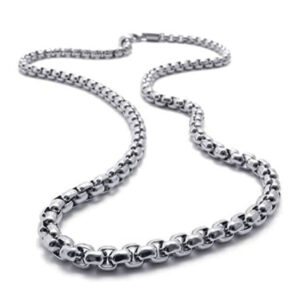
Stainless steel is an alloy composed of chromium, nickel, molybdenum, and other elements that make it resistant to heat and corrosion.
When deciding whether to use stainless or carbon steel, it’s crucial to consider various factors. If stainless steel’s strengths can compensate for carbon steel’s weaknesses, it’s often wise to choose stainless steel for its durability, lifespan, and aesthetic appeal. Carbon steel is an excellent option for applications that require high strength, durability, and cost-effectiveness. However, if there is a risk of corrosion, stainless steel is the superior choice, as it effectively counteracts carbon steel’s durability weaknesses.
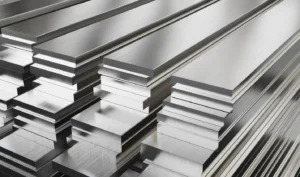
It’s essential to understand which stainless steel grades and types are suitable for specific uses and environments to achieve long-lasting results and minimize costs. Whether you require a durable and corrosion-resistant material for marine settings or a visually appealing and easy-to-clean option for restaurant purposes, a stainless steel alloy can meet your requirements. As a stainless steel parts supplier in China, Enze offers various professional services. If you have more questions about stainless steel, please get in touch with us.

